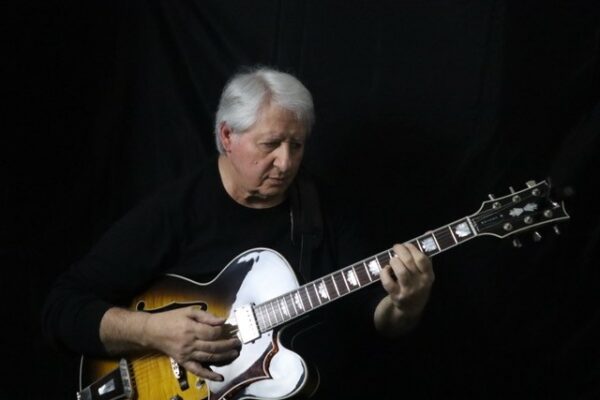Like other musicians with cochlear implants, Massimo worried that his hearing loss would be the end of his musical career. After making incredible strides with his cochlear implant, Massimo created an online rehabilitation resource to help recipients learn how to improve their hearing and get back to making music with cochlear implants.
When you’re a professional musician, hearing loss can be devastating, but for cochlear implant recipient Massimo, it was just the start of a whole new adventure – to help other recipients who are musicians reconnect with music.
Massimo is the Australian creator of an online music training program to help people with cochlear implants regain their appreciation of music and understand the benefits of music to help improve speech perception.
“There are no limits to the power of music, and not just for musicians but also for music amateurs, given its beneficial effects in our lives,” says Massimo.
“It’s well-proven that music pitch rehabilitation also improves our abilities in the everyday speech world, allowing the recipient to experience and enjoy not only music, but also the many aspects of a full and healthy social lifestyle,” he says.
A professional musician, Massimo has been performing for many years and has completed formal studies in electric and classical guitar.
But when Massimo lost his hearing due to Meniere’s disease, and despite the success of his cochlear implant, his world turned upside down: “I completely lost the ability to correctly pitch music notes, nor could I recognize the music I had played for more than 40 years, or the music of other musicians.”
With perseverance, the guitarist created an online program called Playing Music After Deafness using techniques he developed to help others reconnect with music.
“There would be a lot of musicians around the globe that have lost their hearing and have given up music completely, not realizing that the cochlear implant can offer them the opportunity to continue their musical journey, certainly with limits but not without true rewards.
“I have been able to regain my ability to pitch notes correctly that I had lost completely. Encouraged and inspired by my more than positive results, I strongly felt I had to share my techniques with others,” says Massimo.
In his program, Massimo shares rehab techniques he found effective, as well as videos and free online chat advice.
“My findings are purely based on my own research on how human hearing works and how the brain has stored this huge library of musical sounds, frequencies and correct pitches.
“For example, we know that the complexities of musical frequencies are very different from the ones normally found in everyday speech, so the program offers information on the way certain instruments and their natural acoustic sounds are more suited than others to the process of rehabilitation.
“Thanks to my rehabilitation efforts, I can correctly perceive music that is rich with melodies and sound complexities.”
Here are Massimo’s tips to help you enjoy music
- Use quality equipment to listen to music
Use a quality stereo player and quality monitors and speakers. Start with very low volumes and reduce the bass frequencies while adding mid tones and treble ones.
“Generally, cochlear implant recipients can be sensitive to loud sound, so very soft melodic music is the answer. The best scenario is to use quality media players, very good speakers and be in control of the mix by reducing low frequencies and incorporating more mid-frequencies and highs.”
- Listen to familiar music and songs
Listen to lyrics and music you know to help your brain recognize and process the sounds: “Listeners can be helped if they know the melody or the words of a song, allowing the brain to use music information that has been stored previously.”
- Keep track of your listening achievements
“Keep the sessions short – and time them or record them. Write down the name of the song and include the amount of bass, treble and mid tones that you used. Continue to listen and, once you’re comfortable, make the task harder by increasing the tonalities to allow the brain to gently adapt.”
- Practice
Practice daily and rest between sessions, but try to practice three times a day – every morning, afternoon and evening – to challenge the brain.
“Never despair from the initial results because in order to make improvement, it is necessary to make a proper commitment, apply the required changes and do the work that is necessary. In short, little effort equals poor results.”
- Challenge yourself
Once you’ve achieved good results, set bigger challenges such as listening to the radio in the car while surrounded by driving and traffic noises.
“It is essential to try to obtain good results within your limits and then gradually push outside your boundaries of comfort.”
Are you interested in finding more resources to improve your hearing outcomes and your enjoyment of music? Check out the Cochlear CoPilot1 mobile app for iPhone users to find interactive listening exercises, and the Bring Back the Beat mobile app specifically designed to help you embrace music after hearing loss.
- For complete smartphone compatibility information, please visit www.cochlear.com/compatibility.

